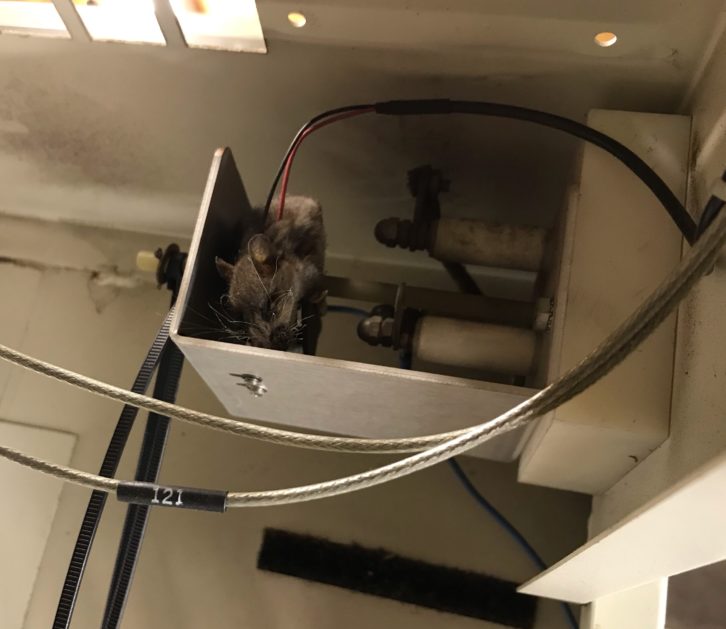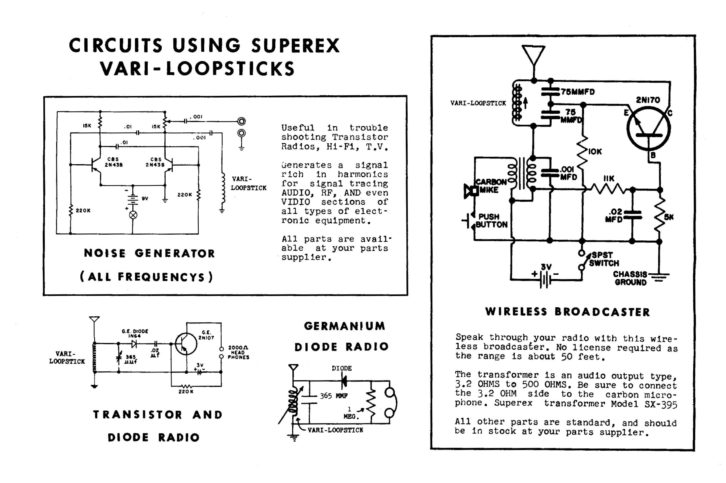Frank Hertel was called to a customer’s site because a 10 kW FM transmitter had failed and would not restart.
After powering everything down, Frank looked in the back. The photo shows the upper right high-voltage (HV) interlock, just inside the door opening.
This type of interlock is known as a “guillotine,” because when the back door is opened, the sliding fiber rod is supposed to slide back and its attached metal plate drops across the two “acorn nuts,” shorting the high-voltage supply to ground.
The idea is that by shorting the HV supply, if the door is opened while the transmitter is on the air, or if there is any stored energy in the HV filter capacitors, the energy will be shunted to ground, thus preventing someone from a dangerous or deadly electric shock. It permits working safely inside the transmitter.
The picture shows what Frank discovered. The dead mouse in the center of the assembly was bad, but that’s not what made Frank angry or why we share the photo.

You will see two black zip or cable ties, wrapped around the fiber rod, near the vertical part of the angle bracket. The two black things at left are ends of the cable ties that were not cut off; they were left attached and hanging.
To be sure, the dead mouse is what initially shorted out the supply and caused the transmitter to fail. But, Frank writes, defeating the HV interlock with those cable ties is inexcusable and could have led to another catastrophe had he not inspected closely.
Certainly, there are times when temporarily defeating the high-voltage protection guillotine might be necessary, such as when you are in the process of troubleshooting high-voltage circuitry when a choke is arcing to ground, or a wire is arcing. But the transmitter should never be left with this important safety feature defeated.
The next guy working on the transmitter may not know that this has been defeated and could get nailed by residual high voltage in the filter capacitors. High-power transmitter manufacturers include bleeder resistors in their designs, which work as a backup to the HV interlock, by slowly bleeding off any residual charge. But bleeder resistors can burn open, meaning there is no path to ground for this charge (except you!).
Opening a cabinet and finding such an obvious and ill-considered situation will make any experienced consulting tech cringe (and in Frank’s case get angry) — and then start looking for the next sloppy and dangerous modification.
Frank’s discovery is a reminder for engineers repairing transmitters to inspect safety equipment carefully. Document what you find and show the station owner or manager. It demonstrates your conscientiousness and safety, and it may help justify your hourly rate. What station owner wants an OSHA investigation and possible lawsuit?
A brighter note
I don’t imagine Frank was thinking of high-voltage electrocution when he was in sixth grade and purchased a crystal radio set from Castrup’s Radio Supply for $1.50.
About a week later, he bought a Raytheon CK722 Germanium transistor for $2. When added to the crystal set, it was possible to drive a speaker through a 50C5 speaker transformer and listen to a station at low volume.
See the accompanying 1950s schematic for the Germanium radio using the Superex Vari-Loopstick. “What a great time to grow up,” Frank writes. “The 1950s were great!”

Exterior-Line-Return
Rod Hogg is a retired broadcast engineer in Scott City, Kan. He read our discussions about the wiring of XLR connectors.
Over 50 years ago when he got into broadcasting, Rod learned that “XLR” connectors were to be wired as (Pin-1) X = eXterior, (Pin 2) L = Line and (Pin 3) R = Return. Regardless of the colors of wire used, the “XLR” is easy to remember.
Of course, Ron adds, this only works with three-conductor connectors. These days, the “XLR” can have up to seven connections. Ron doesn’t have a “diddy” to remember that pinout yet.
Workbench submissions are encouraged and qualify for SBE recertification credit. Email [email protected].












